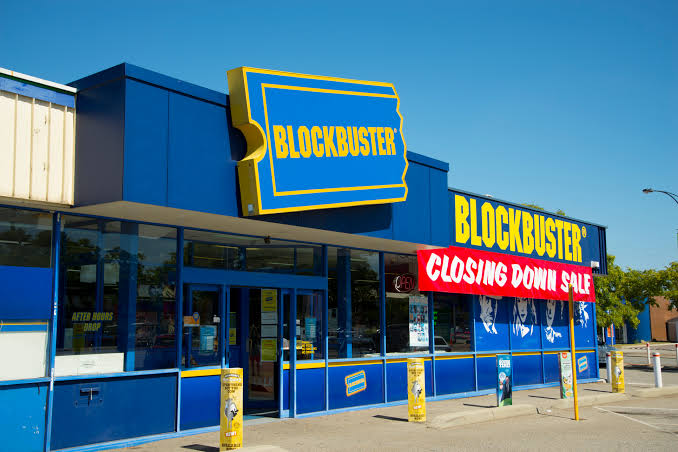
Every battlefield leaves behind fallen warriors, and the world of business is no different. For every successful empire, there are countless failed ventures buried beneath the weight of poor strategy, miscalculation, and unforeseen threats. Business failure is not just about bad luck—it’s often the result of tactical errors, weak foundations, or an inability to adapt to changing conditions.
In this guide, we dissect business failure the way a war general analyzes a lost battle—not to lament, but to learn. Understanding why businesses fail is the first step in fortifying future endeavors, ensuring that when others fall, you remain standing.

- Solving an Irrelevant Problem or an Overcrowded One
A business must solve a real, painful problem—one that so many people are actively looking to fix.
But even if the problem is real, entering an already saturated battlefield without a unique advantage is a guaranteed way to be outgunned.
Strategic Breakdown:
The Phantom Problem – No one truly needs the solution, making the business dead on arrival.
Example: A startup creates an app that reminds people to drink water.
The problem? People who care about hydration already drink water, and those who don’t won’t download an app for it.
The Overcrowded Market – Too many businesses are already solving the problem, leaving little room for new entrants.
Example: Starting another taxi-hailing app in a market dominated by Uber and Bolt.
Unless there’s a groundbreaking innovation, it’s a suicide mission.
The Weak Differentiation – The business offers nothing new or compelling compared to existing competitors.
Example: Opening a new fast-food restaurant with the same burgers and fries as McDonald’s
but without a strong brand, better prices, or a unique twist.
The Brand Loyalty Barrier – Customers are already loyal to established solutions and have no reason to switch.
Example: A new social media platform tries to compete with Facebook but offers nothing significantly better.
People won’t abandon years of connections, content, and familiarity.
Fix:
Before entering the market, assess:
Is this a real, painful problem? (Do people suffer if it’s not solved?)
How many businesses are already solving it sufficiently? (Are there too many well-established players?)
What is my unique, undeniable advantage? (Faster? Cheaper? Safer? Exclusive? Revolutionary?)
Why would customers leave existing solutions for mine? (If they won’t, don’t enter the fight.)
A business without a unique advantage in a crowded market is like sending unarmed soldiers into a battlefield–
they’ll be massacred before they even fire a shot.
- Lack of Clear Vision or Focus
A business without a clear vision is like an army marching without a destination.
It may move, but it won’t conquer.

Many businesses fail because their founders have no concrete direction—they chase too many ideas, pivot endlessly,
or operate without a clear long-term goal.
Strategic Breakdown:
The Drifting Ship – The founders keep changing business models, industries, or target audiences, never settling on a winning strategy.
Example: A startup begins as an e-commerce platform, then shifts to a content site, then tries a subscription model—all within a year.
Customers and investors lose trust.
The No-Strategy Soldier – The founders start a business without a real plan, relying on passion alone.
Example: Someone loves cooking, so they open a restaurant—but they have no pricing strategy, no plan for marketing, and no differentiation.
The restaurant fails despite good food.
The ‘Do-It-All’ Syndrome – Trying to serve everyone and do everything instead of mastering a niche.
Example: A tech company that starts with web design, then adds app development, social media management, and cybersecurity.
Instead of being excellent at one thing, they end up mediocre at everything.
The Leadership Void – The team has no strong decision-maker, leading to chaos and indecision.
Example: A startup with three co-founders who constantly argue about direction, causing slow execution and wasted resources.
Fix:
Define a Clear Vision – What is the end goal? A billion-dollar company? A niche market leader?
Pick a Specific Battlefield – Choose one business model, one core product, and one target audience before expanding.
Stick to the Mission, Adapt Tactically – Small adjustments are necessary, but wild pivots signal confusion.
Appoint a Decisive Leader – A business isn’t a democracy. Someone must have the final say.
A leader without vision is like a general without a map—lost, disorganized, and doomed to fail.
- No Clear Ideal Client (a serious blunder)
A business that tries to sell to everyone ends up selling to no one.
Without a well-defined target audience, marketing efforts become weak, messaging is vague, and sales become inconsistent.
A successful business knows exactly who its ideal client is, how they think, and what drives them to buy.
Strategic Breakdown:
The ‘Everyone is Our Customer’ Trap – Trying to appeal to a broad audience without tailoring messaging or offerings.
Example: A clothing brand launches without a clear market—selling formal suits, streetwear, gym clothes, and baby outfits.
Customers get confused, and the brand fails to stand out.
The Wrong Target – Selling to people who either don’t need or can’t afford the product.
Example: A luxury skincare brand targeting broke college students instead of high-income professionals.
The product is good, but the audience can’t buy it.
Inconsistent Marketing & Branding – Without a clear customer, branding and advertising become generic, failing to connect emotionally.
Example: A high-end watch brand using slang-heavy, Gen Z-style marketing instead of sleek, aspirational messaging that attracts wealthy professionals.
Wasting Money on the Wrong Channels – Advertising and outreach efforts go to places where ideal clients don’t even exist.
Example: A B2B software company pouring money into Instagram ads instead of focusing on LinkedIn and direct outreach.
Fix:
Identify the Ideal Customer Avatar – Age, income, lifestyle, pain points, desires—know them like a hunter knows his prey.
Specialize & Dominate a Niche First – Become the go-to brand for one type of customer before expanding.
Align Marketing & Messaging with the Right Audience – Speak their language, use the platforms they engage with, and address their pain points directly.
Track & Adjust Based on Real Customer Data – Don’t guess. Use analytics and customer feedback to refine the approach.
A business without a clear ideal client is like an archer shooting arrows into the dark—wasting energy, time, and resources with no real impact.

- Absence of an Organizational Structure – The Lone Warrior Syndrome
A business is a machine, and like any machine, it needs multiple moving parts to function efficiently.
When a founder tries to do everything alone, they become the bottleneck—slowing growth, making mistakes, and eventually burning out.
A leader must lead, not micromanage every detail.
Strategic Breakdown:
The ‘One-Man Army’ Fallacy – Believing that doing everything alone saves money, when in reality, it limits growth and creates inefficiencies.
Example: A founder running a business alone—handling customer service, marketing, product development, and finances.
The workload becomes overwhelming, leading to exhaustion and mistakes.
Lack of Delegation – The founder doesn’t trust others to handle tasks, causing slow progress and poor execution.
Example: A business owner insists on approving every minor decision, from website design to packaging colors, delaying operations.
No Clear Roles & Responsibilities – Employees (if there are any) don’t know their exact roles, leading to confusion, overlap, or neglected tasks.
Example: A startup with three employees but no clear job descriptions—one day, someone is handling sales, the next day, they’re doing IT support.
Nothing runs efficiently.
Founder Burnout & Business Stagnation – As the business grows, responsibilities multiply.
Without a structured team, the founder eventually collapses under the weight.
Example: A bakery owner manages baking, sales, marketing, and deliveries.
Demand increases, but without a structured team, quality drops, customers complain, and the business collapses.
Fix:
Build a Core Team – Even a small team with clear roles (operations, sales, marketing, finance) allows a business to scale.
Delegate & Trust – Hire or outsource tasks that don’t require the founder’s direct involvement.
Create an Organizational Structure – Define who does what, who reports to whom, and how decisions flow.
Automate & Systemize – Use technology and processes to reduce manual work (e.g., automated customer emails, scheduled social media posts, streamlined accounting software).
A founder who refuses to build a team is like a king trying to fight an entire war alone—sooner or later, they will fall.
- Inconsistency in Execution – The Lack of Systems & SOPs
A business without standardized systems is like an army that fights without a battle plan—
every fight is chaotic, unpredictable, and inefficient.
Many businesses fail because they rely on improvisation rather than structured execution.
Strategic Breakdown:
Random, Unreliable Execution – There is no set way of doing things, leading to inconsistent results.
Example: A restaurant where every chef cooks the same dish differently.
Customers never get the same experience twice, damaging the brand’s reputation.
No Standard Operating Procedures (SOPs) – Employees perform tasks in different ways, causing errors and inefficiencies.
Example: A logistics company where every delivery driver follows their own route instead of using optimized maps.
Some deliveries arrive on time, others are always late.
Scaling Becomes Impossible – Without structured systems, growth leads to confusion, bottlenecks, and costly mistakes.
Example: A startup that manually processes every order instead of using an automated system.
When sales increase, operations collapse under pressure.
High Employee Turnover & Training Costs – New hires take longer to adapt because there’s no structured training or documented procedures.
Example: A car repair shop where every mechanic works differently, forcing each new hire to figure things out on their own instead of following a proven system.
Fix:
Develop & Document SOPs – Every core task (customer service, sales, marketing, hiring, inventory management) should have a step-by-step process.
Use Systems & Automation – Implement software and structured workflows to reduce human error and ensure consistency.
Train & Enforce Execution Standards – Every team member must follow the same structured approach to tasks.
Measure & Optimize Performance – Track execution metrics and refine processes based on results.
A business without systems is like a tribe that forgets its traditions—every generation starts from scratch, and progress is lost.

- Incompetent Team – The Weakest Link in the Chain
A business is only as strong as the people running it.
If the team is incompetent—lacking skill, discipline, or the right mindset—failure is inevitable.
A single weak link can bring down the entire operation.
Strategic Breakdown:
Hiring Based on Convenience, Not Competence – Choosing employees based on friendships, family ties, or cheap labor instead of skill and ability.
Example: A business hires the founder’s cousin as a sales manager, but he has no experience in sales.
The company struggles to generate revenue.
Lack of Proper Training – Employees are thrown into roles without clear guidance, leading to poor execution.
Example: A customer service rep who never gets trained in handling complaints.
Every interaction is a gamble, frustrating customers.
Low Work Ethic & Accountability – Some team members are lazy, unreliable, or resistant to feedback.
Example: An employee constantly misses deadlines, makes excuses, and never takes responsibility for mistakes.
Toxic Culture & Internal Conflicts – A team that is full of ego battles, gossip, and poor communication will self-destruct.
Example: Two co-founders keep undermining each other’s decisions. Employees are confused about who to follow, and the business stalls.
Fix:
Hire for Skill & Work Ethic, Not Just Loyalty – A competent stranger is better than an incompetent friend.
Train & Develop the Team – Invest in continuous learning to keep employees sharp and effective.
Set Clear Performance Standards – Define KPIs (Key Performance Indicators) and hold people accountable.
Eliminate Weak Links – If someone is a consistent liability, cut them off before they drag the business down.
A business with an incompetent team is like a warrior with a blunt sword—useless in battle and doomed to be defeated.
- Not Being Scalable – The Growth Ceiling Problem
A business that can’t scale is like a warrior who trains only for small battles but is unprepared for war.
Many businesses start well but collapse when demand increases because their structure, operations, and strategy can’t handle growth.
Strategic Breakdown:
Over-Reliance on the Founder – The business only works because the founder is personally involved in everything.
When demand grows, they get overwhelmed, and operations collapse.
Example: A graphic designer starts a freelance business but never builds a team or system.
When too many clients come in, deadlines are missed, and customers leave.
Manual & Inefficient Processes – Too many tasks require direct human effort instead of being automated.
Example: An online store that manually processes every order instead of using an automated checkout and inventory system.
As orders grow, fulfillment becomes chaotic.
Limited Market Reach – The business depends too much on local customers instead of finding ways to expand regionally or globally.
Example: A restaurant that only relies on walk-in customers instead of offering online delivery, franchising, or expanding to new locations.
Scaling Too Late or Too Early – Expanding without preparation or waiting too long to scale.
Example (too early): A startup opens multiple locations before perfecting operations, leading to cash flow problems.
Example (too late): A tech company refuses to hire more developers until the workload is unbearable, causing product delays.
Fix:
Automate & Systemize Early – Implement scalable systems before they become a necessity.
Build a Team That Can Handle Growth – Delegate responsibilities and create leadership layers.
Expand Market Reach Strategically – Consider online platforms, franchising, partnerships, or entering new regions.
Ensure the Business Model Can Handle Volume – If scaling means higher costs without proportional profit increases, rethink the model.
A business that isn’t built for growth will be crushed under its own success.

- Poor Financial Management – The Silent Business Killer
Money is the lifeblood of a business.
Many businesses don’t fail because of a bad product or lack of customers—they fail because they mismanage their finances.
A business without financial discipline is like a warrior marching into battle without food or supplies—it won’t last long.
Strategic Breakdown:
Spending More Than the Business Earns – Lack of budgeting and reckless spending lead to cash flow problems.
Example: A startup raises Ksh 10 million in funding but spends most of it on expensive office space, flashy marketing, and high salaries.
When actual revenue takes longer to grow, the business runs out of money.
No Clear Financial Tracking – The owner has no idea how much money is coming in or going out.
Example: A retail store makes sales daily but doesn’t track expenses. At the end of the month, the owner is shocked to realize there’s no profit.
Pricing That Kills Profits – Some businesses set prices too low to attract customers but end up making losses.
Example: A cleaning service offers the cheapest rates in town but doesn’t factor in transport, cleaning supplies, and labor costs—leading to negative cash flow.
Over-Reliance on Debt Without a Repayment Plan – Borrowing too much without a strategy to repay leads to financial collapse.
Example: A business takes multiple bank loans to expand but underestimates how long it will take to become profitable.
Loan repayments become impossible, and the business shuts down.
Fix:
Have a Strict Budget & Stick to It – Track every coin and avoid unnecessary expenses.
Separate Business & Personal Finances – Never mix personal spending with business accounts.
Price Products & Services Correctly – Factor in all costs and ensure a healthy profit margin.
Manage Debt Wisely – Only borrow if there’s a clear strategy to generate returns and repay on time.
Monitor Cash Flow Daily – Know exactly how much is coming in and going out at all times.
A business with poor financial management is like a king who throws lavish feasts while his army starves—eventually, the empire crumbles.
- Poor Marketing and Branding – Being Invisible in the Market
Even the best product or service will fail if no one knows about it.
Many businesses don’t die because they’re bad but because they’re unknown.
Marketing and branding are what separate a struggling business from a dominant one.
Strategic Breakdown:
Relying Only on Word-of-Mouth – Some businesses expect customers to magically find them without active promotion.
Example: A tailor starts a shop but doesn’t advertise online or in the neighborhood. Months later, only a few people know he exists.
Weak or Confusing Brand Identity – Customers don’t understand what the business stands for.
Example: A health company that sells organic food but has a logo and branding that looks like a fast-food chain—sending mixed signals.
Not Knowing Where the Customers Are – Businesses waste money marketing in the wrong places.
Example: A luxury watch brand targeting middle-class customers on Facebook instead of wealthy professionals on LinkedIn or exclusive events.
Inconsistent or Poor Messaging – A business that changes its message too often loses customer trust.
Example: A skincare company first markets itself as cheap, then later as premium. Customers get confused and avoid buying.
Ignoring Online Marketing – In today’s world, a business without a strong online presence is at a disadvantage.
Example: A high-quality local restaurant refuses to get on Google Maps, Instagram, or food delivery apps, losing potential customers to competitors.
Fix:
Have a Clear Brand Identity – Define what the business stands for and communicate it consistently.
Market Where the Ideal Clients Are – Focus on the channels that directly reach the target audience.
Leverage Online Marketing – Use social media, SEO, paid ads, and influencer marketing to attract attention.
Create a Strong First Impression – Logos, packaging, website, and messaging should immediately communicate quality and reliability.
Be Consistent & Persistent – Marketing is not a one-time event but a continuous process.
A business without effective marketing is like a great warrior who never enters the battlefield—no one will know or respect his strength.

- Failure to Adapt – Stubbornness in a Changing World
A business that refuses to adapt is like an old warrior trying to fight modern battles with outdated weapons.
Markets change, customer preferences evolve, and new technologies emerge.
A business that clings to the past instead of adjusting to the present is doomed.
Strategic Breakdown:
Ignoring Industry Trends & Technology – Businesses that refuse to modernize get left behind.
Example: Kodak dominated the photography industry but ignored digital cameras, thinking film would always be king.
They went bankrupt.
Refusing to Listen to Customer Feedback – Businesses that dismiss complaints or suggestions fail to improve.
Example: A restaurant keeps serving the same menu for years, even when customers ask for healthier options.
Eventually, people leave for competitors who offer what they want.
Relying on Outdated Business Models – What worked yesterday might not work today.
Example: A retail store refuses to launch an online shop, believing that physical stores will always be enough.
Competitors who embrace e-commerce take over the market.
Being Too Slow to React to Competition – When rivals innovate, a slow-moving business gets crushed.
Example: Nokia was once the king of mobile phones but underestimated the rise of smartphones.
Apple and Samsung took over the market.
Stubborn Leadership That Rejects Change – Some founders and executives refuse to adapt because they are too emotionally attached to their old ways.
Example: Blockbuster had a chance to buy Netflix early on but rejected the idea, believing physical movie rentals would never die.
Today, Netflix is a giant, and Blockbuster is gone.
Yahoo! could also have bought Google. Today, nobody talks about Yahoo!
Fix:
Stay Updated on Market Trends – Always watch for changes in customer behavior, technology, and competition.
Listen to Customer Feedback & Act on It – Adjust products and services based on what people actually want.
Be Open to New Business Models – If the market shifts, be ready to shift with it.
Monitor Competitors Closely – If they introduce something new, don’t ignore it—analyze and respond strategically.
Encourage a Culture of Innovation – A business that constantly experiments and improves will always stay ahead.
A business that fails to adapt is like a warrior who refuses to upgrade his weapons—
eventually, he will be defeated by those who do.

- Poor Customer Service – Ignoring the People Who Keep the Business Alive
A business that mistreats customers is like a king who insults his own army—eventually, they will abandon him.
Customers are the foundation of any business, and if they feel unappreciated, they will leave for a competitor.
Strategic Breakdown:
Ignoring Customer Complaints – If people keep complaining about the same issue and nothing changes, they will stop buying.
Example: A restaurant constantly serves cold food, and customers complain, but the management does nothing.
Soon, the place is empty.
Rude or Unhelpful Staff – Bad customer service kills businesses faster than bad products.
Example: A shop assistant treats customers like a nuisance instead of making them feel valued.
People stop coming back.
Slow or No Response to Inquiries – Customers expect quick, helpful responses.
Businesses that ignore messages or delay too long lose trust.
Example: A furniture store takes days to reply to potential buyers on WhatsApp. Meanwhile, a competitor responds in minutes and gets the sale.
Overpromising and Underdelivering – When businesses promise more than they can deliver, customers feel deceived.
Example: A delivery company promises “same-day delivery” but consistently delivers late. Customers stop using them.
No Loyalty or Retention Strategy – Focusing only on getting new customers instead of keeping existing ones.
Example: A gym constantly offers discounts to attract new members but ignores long-term members who feel unappreciated and leave.
Fix:
Train Staff to Handle Customers Professionally – A well-trained team turns every customer into a loyal client.
Respond Quickly & Solve Problems Effectively – Speed and efficiency in handling complaints build trust.
Deliver More Than You Promise – Surprise customers by exceeding their expectations.
Appreciate Loyal Customers – Offer special deals, discounts, or personalized service for repeat clients.
Monitor Customer Feedback & Adjust Accordingly – Learn from complaints and use them to improve.
A business that neglects customer service is like a General who ignores his soldiers’ needs—
eventually, they will walk away, leaving him defenseless.
- Depending on One Major Client, Supplier, or Revenue Stream – The Single-Point Failure Trap
A business that relies too much on one client, one supplier, or one source of income is like a kingdom that depends on one well for water—
if it dries up, disaster strikes.
Diversification is key to survival.
Strategic Breakdown:
Over-Reliance on One Big Client – If one customer makes up most of the revenue, losing them means instant failure.
Example: A marketing agency gets 80% of its income from one corporate client. When the client finds a cheaper agency, the business collapses overnight.
Depending on a Single Supplier – If the supplier has issues, the entire business suffers.
Example: A furniture store only buys wood from one supplier. When that supplier raises prices or runs out of stock, production stops.
Limited Revenue Streams – A business with only one way of making money is at high risk.
Example: A barbershop only makes money from haircuts but ignores opportunities like selling hair products or offering premium grooming services like neck massage.
No Backup Plan for Emergencies – If the key client, supplier, or revenue stream disappears, there is no alternative.
Example: A logistics company only delivers for one supermarket chain. When the chain decides to build its own delivery system, the logistics company goes bankrupt.
Fix:
Diversify Clients & Revenue Streams – Avoid putting all income into one basket.
Have Multiple Suppliers – Always have backup suppliers to avoid shortages or price manipulation.
Develop Side Income Streams – If one area struggles, other areas can keep the business alive.
Create Emergency Plans – Always prepare for worst-case scenarios.
A business with only one major client or revenue source is like a warrior with only one weapon—if it breaks, the battle is lost.

- Expanding Too Fast Without a Strong Foundation – Growth That Destroys Instead of Building
Many businesses collapse not because they didn’t grow, but because they grew too fast without the structure to support it.
Expansion should be strategic, not reckless.
Watch the story of Wework on Magnatesmedia YouTube channel to get a clear picture of this.
Strategic Breakdown:
Scaling Before Mastering Operations – If the business is struggling at a small level, expanding will only multiply the problems.
Example: A restaurant with poor service and inconsistent food quality opens three more branches. Instead of more profits, it creates more chaos and loses customers.
Hiring Too Fast Without a Solid Team Culture – Rapid hiring without training or leadership leads to confusion and inefficiency.
Example: A tech startup raises funding and hires 50 employees within months but has no clear roles or structure. Productivity drops, and chaos follows.
Overstretching Financially – Expanding requires capital, but doing it too aggressively can drain cash flow.
Example: A retail store opens 10 new locations without ensuring profitability in the first few. It struggles with rent, salaries, and stock, leading to the inevitable closure.
Expanding Before Understanding the Market – What works in one location or industry might fail elsewhere.
Example: A successful clothing brand in Nairobi rushes to open a branch in a rural town without researching the market. The town has no demand for trendy urban fashion, and the business fails.
Losing Focus on Core Strengths – Some businesses expand into areas they don’t understand.
Example: A car repair shop decides to start selling spare parts without expertise in sourcing or pricing. The new venture drains resources instead of making profits.
Fix:
Ensure a Strong, Profitable Base First – Only expand when operations are smooth, and cash flow is stable.
Grow Step by Step – Test small expansions before going big.
Hire & Train Employees Before Scaling – A business should have a strong team culture before bringing in more people.
Study New Markets Carefully – Don’t assume success in one place means success everywhere.
Expand Based on Demand, Not Ego – Growth should be customer-driven, not just for the sake of bragging rights.
A business that expands too fast without control is like a warrior running deep into enemy territory without reinforcements—sooner or later, he will be overwhelmed.
The Blueprint for a Successful, Scalable, and Unbreakable Business
Failure in business is rarely caused by one big mistake—it’s usually a series of small, overlooked weaknesses that eventually break the system.
The key to building a business that thrives and scales without collapsing is to create a solid foundation, operate with discipline, and execute with strategic precision.

- Solve a Real, Valuable Problem
The foundation of a great business is providing a product or service that people truly need and are willing to pay for. Test the market before committing.
- Have a Clear Vision and Focus
A business without direction is like a ship without a captain. Define your goals, your purpose, and your ideal customers, then stay focused on delivering value to them.
- Build a Strong Organization with Clear Systems
Create an organizational structure that allows delegation and accountability.
Develop standard operating procedures (SOPs) to ensure efficiency and consistency.
Hire competent people and place them in roles that match their strengths.
- Deliver Excellence & Prioritize Customer Experience
Provide top-tier customer service—happy customers return and bring others.
Focus on quality and consistency in product/service delivery.
Respond to customer feedback and improve continuously.
- Ensure Financial Discipline
Keep personal and business finances separate.
Track revenue, expenses, and profits with precision.
Price for profitability, not just survival.
Avoid unnecessary debt and overspending.
- Master Execution and Consistency
A business succeeds when plans turn into disciplined execution. Inconsistent effort leads to mediocre results.
Create a culture of action, accountability, and continuous improvement.
- Avoid Over-Reliance on One Client, Supplier, or Income Stream
Diversify your customer base to avoid depending on one major client.
Have multiple suppliers to prevent stock shortages or price manipulation.
Develop multiple revenue streams to keep cash flow stable.
- Scale at the Right Pace
Strengthen your foundation before expanding.
Grow in controlled phases—test, optimize, then expand.
Ensure the business can handle growth operationally and financially.
A truly scalable and unbreakable business is built like a fortress—strong in structure, flexible in adaptation, and ruthless in execution.
The key is strategy, discipline, and long-term thinking.
Weak businesses chase quick money.
Strong businesses build systems that generate wealth for years.
The Tribal Chief does not build temporary empires—he builds legacies.

